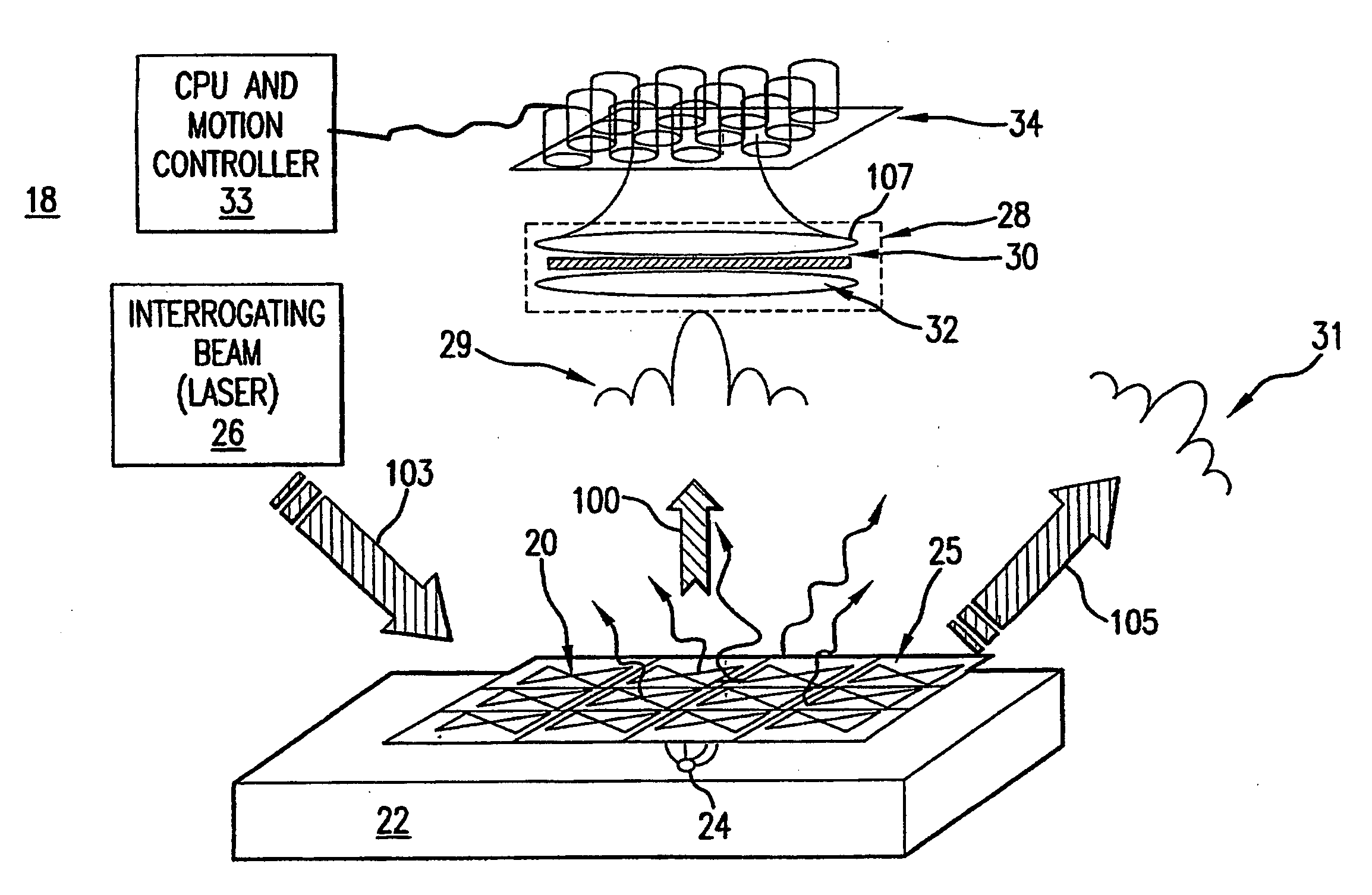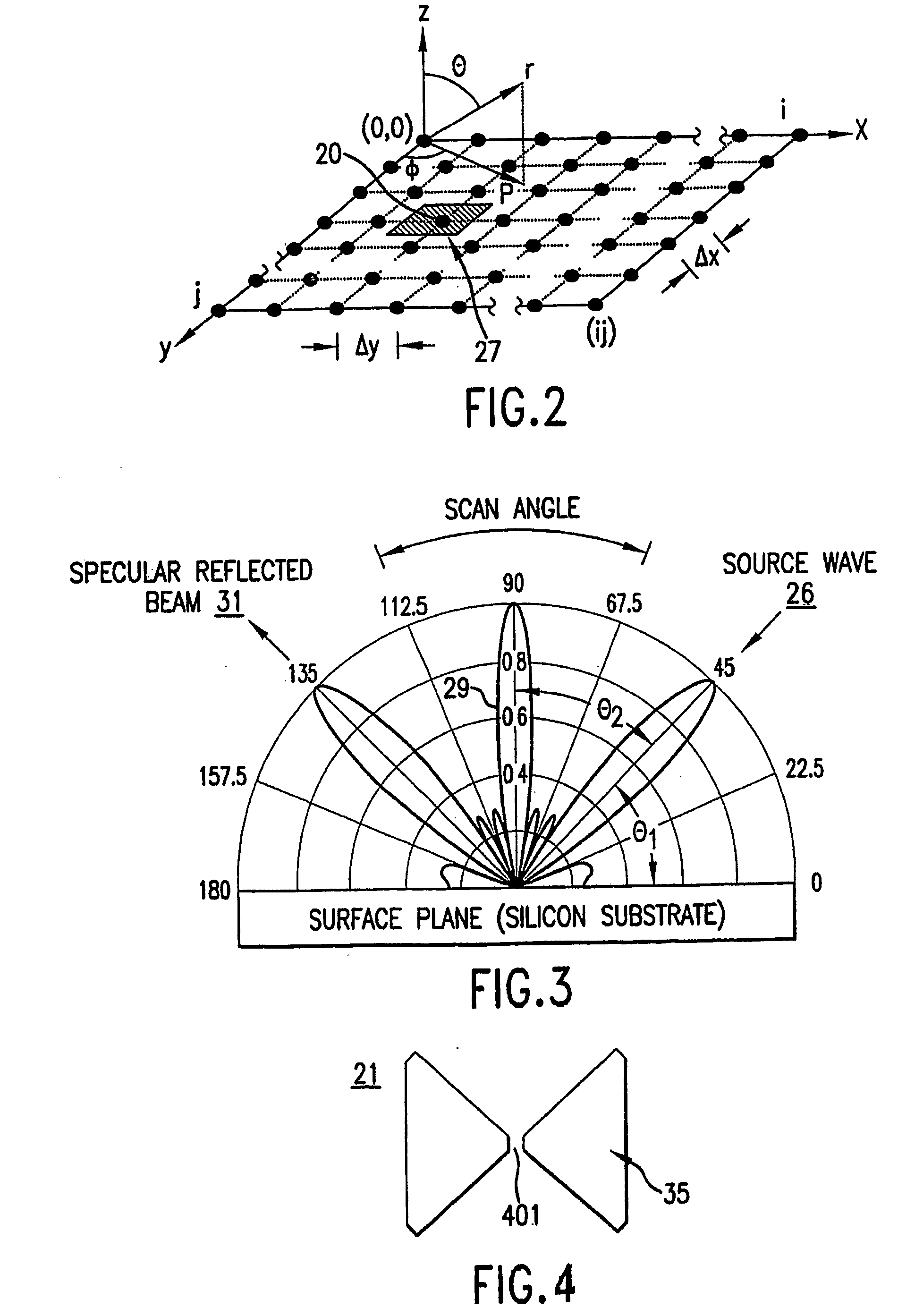Wave interrogated near field arrays system and method for detection of subwavelength scale anomalies
a near field array and subwavelength scale technology, applied in the direction of instruments, semiconductor/solid-state device testing/measurement, nuclear engineering, etc., can solve the problems of affecting the accuracy of the detection method, and the inability to accurately detect the spot size. , to achieve the effect of retaining the convenience and speed of far-field scattering data collection
- Summary
- Abstract
- Description
- Claims
- Application Information
AI Technical Summary
Benefits of technology
Problems solved by technology
Method used
Image
Examples
Embodiment Construction
[0028]FIGS. 1-3 depict one exemplary embodiment of the present invention. A wave interrogated near field array system 18 is shown to include a plurality of antenna elements or probes 20, which may be constructed of open circuited bow-tie antennas on an optically transparent substrate 25. The transparent substrate 25 may be fabricated from SiO2, BK7, or other suitable optical glass. A substrate 22 to be examined for anomalies may be provided under the array of antenna elements 20. The substrate 22 may for instance be silicon, metallic, or magnetic media. The array typically is placed at a height of approximately 70 nm from the surface of the substrate 22 to be examined. The antenna elements 20 may be illuminated by a reference source 26, which may be coherent monochromatic source, for example a laser, emitting electromagnetic energy having a characteristic wavelength (λ), producing a free space wave. In one exemplary embodiment, the characteristic wavelength λ of the energy source is...
PUM
 Login to View More
Login to View More Abstract
Description
Claims
Application Information
 Login to View More
Login to View More - R&D
- Intellectual Property
- Life Sciences
- Materials
- Tech Scout
- Unparalleled Data Quality
- Higher Quality Content
- 60% Fewer Hallucinations
Browse by: Latest US Patents, China's latest patents, Technical Efficacy Thesaurus, Application Domain, Technology Topic, Popular Technical Reports.
© 2025 PatSnap. All rights reserved.Legal|Privacy policy|Modern Slavery Act Transparency Statement|Sitemap|About US| Contact US: help@patsnap.com



